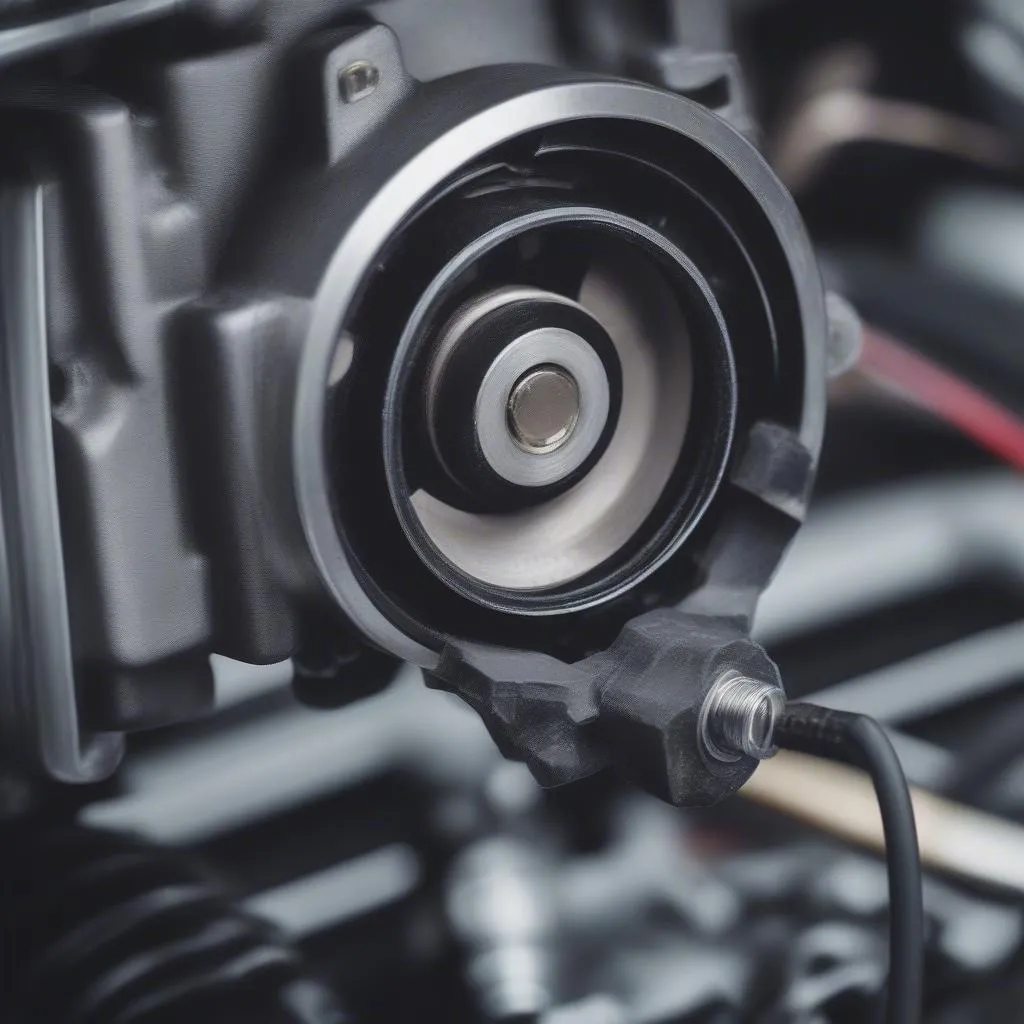Imagine this: You’re driving down the highway, enjoying the open road, when suddenly your engine starts to sputter and misfire. You pull over, check under the hood, and notice a blinking engine light. The culprit? A faulty camshaft sensor.
This scenario is more common than you think, and while it might sound intimidating, diagnosing and potentially replacing a camshaft sensor isn’t as daunting as it seems. With the right tools and a bit of knowledge, you can test your camshaft sensor with a scan tool and potentially save yourself a trip to the mechanic.
Why Understanding Camshaft Sensors is Important
Camshaft Sensor: The Engine’s Timing Keeper
The camshaft sensor plays a crucial role in your car’s engine. It’s a small but essential component responsible for measuring the position of the camshaft, which in turn determines the timing of the engine’s valves. This timing is vital for ensuring proper combustion and optimal engine performance.
The Impact of a Faulty Camshaft Sensor
A faulty camshaft sensor can lead to a variety of problems, including:
- Engine misfires: The most common symptom is a rough idle or engine misfire. The sensor’s inaccurate timing signals can disrupt the engine’s combustion process, causing misfires.
- Reduced power: A faulty sensor can also result in a loss of engine power, making your car sluggish and unresponsive.
- Increased fuel consumption: When your engine isn’t running optimally, it can consume more fuel, leading to higher fuel bills.
- Difficulty starting: In severe cases, a faulty camshaft sensor can make it difficult or impossible to start your car.
Testing the Camshaft Sensor with a Scan Tool: Why It Matters
Testing the camshaft sensor with a scan tool is a common practice used by technicians and DIY enthusiasts to diagnose potential issues and determine if the sensor is the root of your engine problems. This method provides accurate and comprehensive data, eliminating guesswork and potentially saving you time and money.
How to Test a Camshaft Sensor with a Scan Tool: Step-by-Step
1. Gather Your Equipment
Before you begin, make sure you have the following:
- A scan tool: This is essential for reading the sensor data and performing tests. A professional-grade scan tool like Diag XCar’s Dealer Scanner For European Cars can provide you with the necessary diagnostic capabilities for various European car brands.
- Technical manual: Referencing your vehicle’s technical manual will provide valuable information regarding the location of the camshaft sensor and the specific test procedures for your car model.
2. Locate the Camshaft Sensor
The camshaft sensor’s location varies depending on your vehicle’s make and model. You can typically find it:
- Near the front of the engine, often mounted on the cylinder head or near the timing chain cover.
- Refer to your vehicle’s technical manual for precise instructions on locating the sensor.
3. Connect the Scan Tool
Once you’ve located the sensor:
- Connect the scan tool: Make sure the scan tool is compatible with your vehicle.
- Start the engine: The scan tool will need the engine running to collect data from the sensor.
4. Access the Sensor Data
Navigate through the scan tool’s menus to find the camshaft sensor readings:
- Live Data: Most scan tools allow you to view live data, including the camshaft sensor’s readings.
- Sensor Test: Some scan tools provide specific tests for individual sensors, such as the camshaft sensor.
5. Analyze the Sensor Readings
Compare the live sensor readings with the values specified in your vehicle’s technical manual:
- Check for inconsistencies: Any significant variations or erratic readings could indicate a faulty sensor.
- Compare with other sensors: If your scan tool provides readings from multiple sensors, compare the camshaft sensor readings with those of other related sensors, such as the crankshaft sensor, to look for correlations or discrepancies.
6. Interpretation and Troubleshooting
Interpreting the sensor readings:
- Correct readings: If the readings are within the specified range and consistent, the camshaft sensor is likely functioning correctly.
- Abnormal readings: If the readings are erratic, fluctuate, or are outside the acceptable range, the camshaft sensor may be faulty.
Troubleshooting:
- Double-check the connections: Ensure the sensor’s wiring is securely connected and free from corrosion.
- Inspect the sensor’s physical condition: Examine the sensor for any damage, wear, or debris.
- Replace the sensor: If the sensor is physically damaged or consistently produces abnormal readings, replacement is recommended.
Frequently Asked Questions (FAQs)
Q: What are some common symptoms of a faulty camshaft sensor?
A: As mentioned earlier, common symptoms include engine misfires, reduced power, increased fuel consumption, and difficulty starting.
Q: How do I know if the problem is actually the camshaft sensor?
A: While the symptoms can point to a faulty sensor, it’s crucial to conduct thorough testing using a scan tool to confirm the diagnosis. This eliminates potential issues with other components like ignition coils, spark plugs, or the wiring harness.
Q: Can I test the camshaft sensor with a multimeter?
A: While a multimeter can be used to check the sensor’s electrical continuity and resistance, it doesn’t provide the same level of detail as a scan tool. A scan tool gives you live data and allows for specific tests to assess the sensor’s functionality.
Q: What are the risks of driving with a faulty camshaft sensor?
A: Driving with a faulty camshaft sensor can lead to further damage to your engine. The incorrect valve timing can cause wear and tear on engine components, potentially leading to more expensive repairs.
Q: How much does it cost to replace a camshaft sensor?
A: The cost of replacing a camshaft sensor varies depending on your vehicle’s make and model. The sensor itself might cost anywhere from $50 to $200, and the labor cost can vary depending on your mechanic’s fees and the accessibility of the sensor.
Q: Can I replace the camshaft sensor myself?
A: Depending on your comfort level with automotive repairs and the specific requirements of your vehicle, it’s possible to replace the camshaft sensor yourself. Refer to your vehicle’s technical manual or online resources for guidance.
Q: What else can I do to keep my engine running smoothly?
A: Regular maintenance is key to ensuring your engine’s longevity. This includes:
- Oil changes: Regularly changing your engine oil and filter helps lubricate and protect the engine’s moving parts.
- Air filter replacement: A clean air filter ensures proper airflow to the engine, improving its performance and efficiency.
- Spark plug replacement: Replacing your spark plugs at the recommended intervals ensures efficient combustion.
- Fuel system cleaning: Regular fuel system cleaning removes deposits and helps prevent fuel line clogging.
Ready to Tackle Your Engine Problems?
Diagnosing and potentially replacing a camshaft sensor can feel like a daunting task, but with the right information and tools, it’s an achievable DIY project. If you have any doubts, questions, or need assistance with your diagnostics or repairs, don’t hesitate to contact us!
We’re passionate about helping you understand your car’s inner workings and empowering you to keep your vehicle running smoothly.
Reach out to our team of experts for personalized support and guidance!
Whatsapp: +84767531508
 Camshaft Sensor Testing
Camshaft Sensor Testing
 Camshaft Sensor Location
Camshaft Sensor Location


